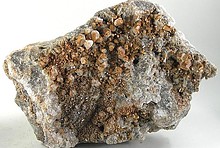Home PageAbout MindatThe Mindat ManualHistory of MindatCopyright StatusWho We AreContact UsAdvertise on Mindat
Donate to MindatCorporate SponsorshipSponsor a PageSponsored PagesMindat AdvertisersAdvertise on Mindat
Learning CenterWhat is a mineral?The most common minerals on earthInformation for EducatorsMindat ArticlesThe ElementsThe Rock H. Currier Digital LibraryGeologic Time
Minerals by PropertiesMinerals by ChemistryAdvanced Locality SearchRandom MineralRandom LocalitySearch by minIDLocalities Near MeSearch ArticlesSearch GlossaryMore Search Options
The Mindat ManualAdd a New PhotoRate PhotosLocality Edit ReportCoordinate Completion ReportAdd Glossary Item
Mining CompaniesStatisticsUsersMineral MuseumsClubs & OrganizationsMineral Shows & EventsThe Mindat DirectoryDevice SettingsThe Mineral Quiz
Photo SearchPhoto GalleriesSearch by ColorNew Photos TodayNew Photos YesterdayMembers' Photo GalleriesPast Photo of the Day GalleryPhotography
╳Discussions
💬 Home🔎 Search📅 LatestGroups
EducationOpen discussion area.Fakes & FraudsOpen discussion area.Field CollectingOpen discussion area.FossilsOpen discussion area.Gems and GemologyOpen discussion area.GeneralOpen discussion area.How to ContributeOpen discussion area.Identity HelpOpen discussion area.Improving Mindat.orgOpen discussion area.LocalitiesOpen discussion area.Lost and Stolen SpecimensOpen discussion area.MarketplaceOpen discussion area.MeteoritesOpen discussion area.Mindat ProductsOpen discussion area.Mineral ExchangesOpen discussion area.Mineral PhotographyOpen discussion area.Mineral ShowsOpen discussion area.Mineralogical ClassificationOpen discussion area.Mineralogy CourseOpen discussion area.MineralsOpen discussion area.Minerals and MuseumsOpen discussion area.PhotosOpen discussion area.Techniques for CollectorsOpen discussion area.The Rock H. Currier Digital LibraryOpen discussion area.UV MineralsOpen discussion area.Recent Images in Discussions
Identity HelpCan anyone put a locality on this specimen of sandstone?`
10th Jul 2014 22:30 UTCRock Currier Expert

10th Jul 2014 22:40 UTCGary Weinstein
It has a similar appearance to "print stone" an ocher infused siliceous siltstone from Brockman Station, 70 km NW of Tom Price, Australia.
Hope this helps,
Gary
11th Jul 2014 00:40 UTCRock Currier Expert
Thanks, thats' in Western Australia, right? Perhaps some other Australians like Ralph can confirm that. We don't seem to have that locality listed here on mindat, nor any examples of Print Stone. Does anyone here have any examples or photos of print stone from this locality that they could share with us? Pictures of Australian print stone on the net show a strong resemblance to the polished slab above. Ralph, are you there? Perhaps our Australian expert can confirm and tell us more about the material.
11th Jul 2014 04:12 UTCJohn Truax
Check out this link: http://outbackmining.com/printstone.htm
A google image search for printstone shows many similar looking rocks.
JT

11th Jul 2014 08:47 UTCErik Vercammen Expert
11th Jul 2014 13:02 UTCRock Currier Expert
I think that pretty much nails it down. I have uploaded it as an example and created a glossary entry for the stuff.
12th Jul 2014 00:48 UTCRalph S Bottrill 🌟 Manager
12th Jul 2014 01:38 UTCRock Currier Expert
12th Jul 2014 04:20 UTCRalph S Bottrill 🌟 Manager
I left the glossary item there for now, edited slightly, but thoughts are most welcome?
13th Jul 2014 09:32 UTCRock Currier Expert
I guess a name is useful if a bunch of people start using it. Is graphic granite a useful name? What about lapis or smoky topaz. I think we all agree that we should have a page or at least a glossary entry about those. We don't have an entry for smoky topaz, but I think we probably should if for no other reason that to explain to people that it is the same as smoky quartz and the name is often used by people trying to trade on a more valuable name. We should probably have a glossary entry for clean coal, which is a new name the coal industry is promulgating to try and take some of the stigma away from the pollution that coal causes. Ralph stone, well you know that is kind of catchy. Can you post some pictures of it?
One way to know if we should have a page or a glossary entry here on Mindat would be to capture search requests that produced no hits. With such a list we could decide weather to craft entries so that in the future a similar search would meet with success.
14th Jul 2014 14:17 UTCRalph S Bottrill 🌟 Manager
Lapis is historical, and well referenced; Smoky topaz is commonly used in gem books too, though it's best forgotten, like Azeztuleite etc. it becomes a problem when a name just comes from no-where, do they all get added? A while back someone discovered an altered gabbro in Tasmania polished up nicely so lapidarists started collecting and cutting some bits and putting them on sale at some local gems fairs labelled Brasseyite after a local hill. Should we add the name to Mindat? Personally I would wait until it gets written up in various publications, but I would be very interested in what others think?




Mindat.org is an outreach project of the Hudson Institute of Mineralogy, a 501(c)(3) not-for-profit organization.
Copyright © mindat.org and the Hudson Institute of Mineralogy 1993-2024, except where stated. Most political location boundaries are © OpenStreetMap contributors. Mindat.org relies on the contributions of thousands of members and supporters. Founded in 2000 by Jolyon Ralph.
Privacy Policy - Terms & Conditions - Contact Us / DMCA issues - Report a bug/vulnerability Current server date and time: April 16, 2024 19:29:14
Copyright © mindat.org and the Hudson Institute of Mineralogy 1993-2024, except where stated. Most political location boundaries are © OpenStreetMap contributors. Mindat.org relies on the contributions of thousands of members and supporters. Founded in 2000 by Jolyon Ralph.
Privacy Policy - Terms & Conditions - Contact Us / DMCA issues - Report a bug/vulnerability Current server date and time: April 16, 2024 19:29:14











